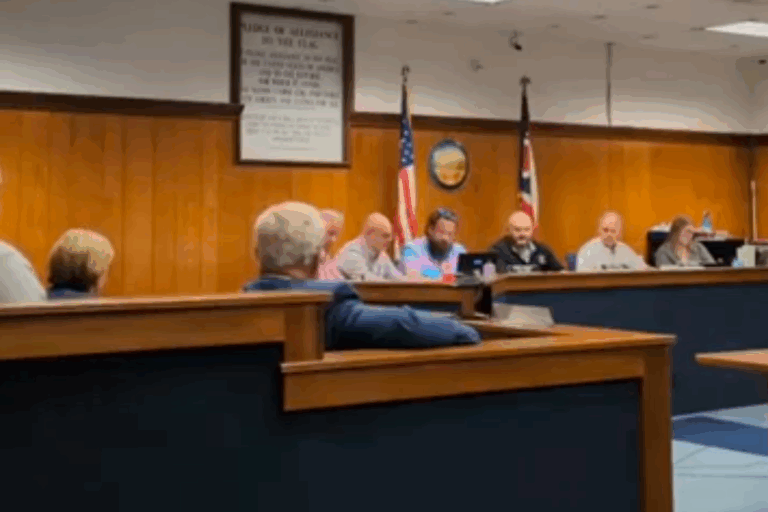
The Impact of Norovirus on Northern Ohio Communities: What It Means for Everyday Citizens
As the winter season progresses, communities across Northern Ohio are grappling with a surge in norovirus cases. This highly contagious stomach virus, characterized by vomiting and diarrhea, has reached record levels nationwide, and the effects are beginning to ripple through local healthcare systems, schools, and businesses. For residents in cities like Cleveland, Lorain, Elyria, and Vermilion, the outbreak presents both immediate health concerns and broader economic implications.

Understanding Norovirus: A Growing Concern
Norovirus is the leading cause of foodborne illness in the United States, responsible for nearly 58% of such cases annually. According to the Centers for Disease Control and Prevention (CDC), the virus spreads through contaminated food, water, surfaces, and close contact with infected individuals. Outbreaks are most common from November to April, and this season’s surge is proving particularly severe.
Recent data from the CDC indicates 91 outbreaks were reported nationwide during the week of December 5—a sharp increase from 69 the previous week. In Northern Ohio, healthcare officials have noted a rise in cases across various settings, from schools to long-term care facilities. The Minnesota Department of Health reported similar spikes, logging double the usual number of cases for December, underscoring a national trend that hits close to home.
The Local Impact on Northern Ohio Communities
Healthcare Facilities
Healthcare systems in Northern Ohio are facing added pressure as norovirus spreads. Nursing homes and hospitals in cities like Lorain and Elyria are particularly vulnerable, given the virus’s tendency to severely impact older adults and those with weakened immune systems. Facilities in Vermilion, such as Kingston of Vermilion, should be taking extra precautions to prevent outbreaks among their residents, many of whom are at high risk for dehydration and other complications.
Schools and Childcare Centers
Schools in Northern Ohio, including those in Vermilion and Lorain, are no strangers to the challenges posed by contagious illnesses. Norovirus outbreaks can lead to widespread absenteeism among students and staff, disrupting the learning environment and creating logistical headaches for parents. Many schools are increasing sanitation measures and educating students on proper handwashing techniques to help contain the spread.
Food Service Industry
The food service industry, a cornerstone of Northern Ohio’s economy, is also feeling the strain. Restaurants and catering businesses in Cleveland, Vermilion, and other cities face heightened scrutiny as the virus’s reputation as a foodborne illness looms large. Improper food handling can lead to outbreaks, potentially tarnishing reputations and causing financial losses. Businesses are ramping up staff training and sanitation protocols to mitigate risks.
Winter Tourism and Events
Northern Ohio’s winter events, such as holiday markets and local festivals, are beloved traditions that bring communities together. However, the fear of norovirus outbreaks is prompting some organizers to consider implementing additional hygiene protocols to enhance safety measures.
Everyday Impacts for Residents
Health Concerns
For everyday citizens, the norovirus surge poses significant health risks. While most people recover within a few days, the virus can be particularly dangerous for young children, the elderly, and individuals with chronic illnesses. Dehydration from vomiting and diarrhea is a major concern, with symptoms such as dizziness, dry mouth, and reduced urination signaling a need for medical attention.
Economic Burden
The economic impact of the outbreak is another pressing issue. Families may face unexpected medical expenses and lost wages due to illness or caregiving responsibilities. For small businesses, especially in the food and hospitality sectors, an outbreak can mean temporary closures and revenue loss.
Community Resilience
Despite these challenges, Northern Ohio communities are demonstrating resilience. Local organizations are stepping up to provide resources, from distributing educational materials to offering free hand sanitizer and cleaning supplies. Schools and businesses are collaborating with public health officials to implement preventative measures.
Steps Communities Can Take to Protect Themselves
Preventative Measures
Public health experts stress that prevention starts with rigorous handwashing. Residents should wash their hands with soap and warm water for at least 20 seconds, especially before meals and after using the bathroom. Hand sanitizers can be used as a supplement but are not as effective against norovirus.
Other key steps include:
- Cooking shellfish thoroughly and washing fruits and vegetables before consumption.
- Cleaning and disinfecting contaminated surfaces with household cleaners.
- Washing laundry in hot water and drying on high heat.
Public Awareness Campaigns
Communities across Northern Ohio are launching awareness campaigns to educate residents on how to protect themselves. Posters in schools, public service announcements on local radio stations, and social media outreach are all part of the effort.
Support for Vulnerable Groups
Special attention is being given to the most at-risk populations. Nursing homes are conducting staff training on outbreak prevention, while local food banks are distributing educational flyers alongside groceries. Vermilion’s senior centers have started hosting workshops on dehydration prevention and virus containment.
What This Means for Northern Ohio’s Future
The current norovirus surge is a reminder of the importance of public health preparedness. For Northern Ohio, it underscores the need for robust infrastructure in healthcare, education, and community support. While the region is managing the outbreak with resilience, continued vigilance and proactive measures will be crucial in mitigating future impacts.
As residents, businesses, and local governments work together, Northern Ohio is proving that community spirit can rise to meet even the toughest challenges. By staying informed and taking preventative steps, the region can navigate this outbreak while protecting its most vulnerable members.





